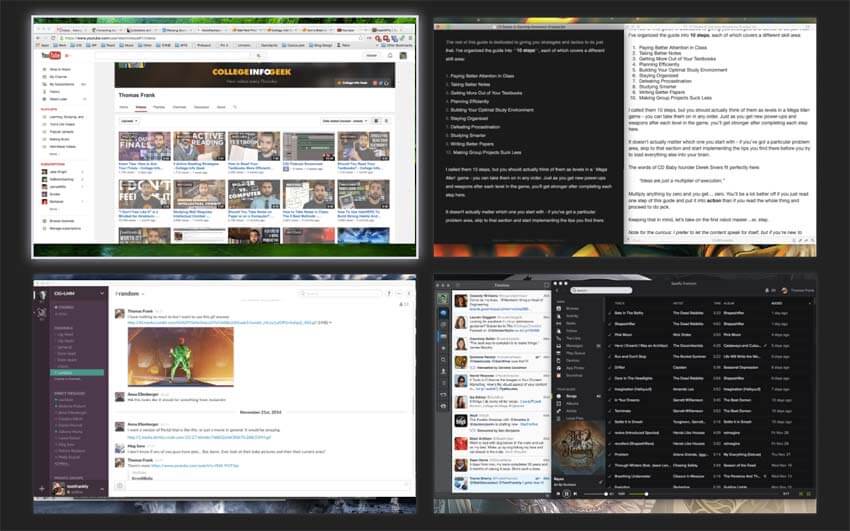
These vestiges can be very small in size, thus leaving them alone may not affect your Mac performance, yet they can also be a large chunks of useless files that occupy a large portion of your hard drive space.
#Totalspaces uninstall software#
However, a fact is often neglected that, even the stand-alone software may might still leave its configuration and preferences files on multiple system directories after you carry out a basic uninstall. Generally speaking, most Mac applications are separate bundles that contain the executable and any associated resources for the app, and therefore users can easily remove any unwanted software (if they are installed properly) from their Macs. In normal cases Mac users just need to simply drag and drop the target app to the Trash and then empty the Trash to perform the standard uninstallation. Uninstalling applications in macOS/Mac OS X is quite different from that in Windows operating system. Things you should know about Mac app removal:
#Totalspaces uninstall how to#
How to uninstall TotalSpaces 2.0.17 on Mac computer? If you encounter problem when trying to delete TotalSpaces 2.0.17 as well as its associated components, read through this removal tutorial and learn about how to perfectly remove any unwanted applications on your Mac. You can find some further information in our original blog post.How Can I Uninstall TotalSpaces 2.0.17 from My Mac If you are upgrading your machine to macOS 10.14 Mojave or Catalina and have SIP turned on, TotalSpaces2 will warn you about not being able to load, and you should follow the instructions here. This is not harmful (it won’t ever be loaded if you do not run TotalSpaces2), but to be totally clean you should disable SIP and either manually remove it, or run the uninstaller again.

Note that if you have SIP turned on, then the uninstaller will not be able to remove the file in /System/Library/ScriptingAdditions. To remove TotalSpaces2 from your system, run the uninstaller found on the [latest dmg download of TotalSpaces2(/changes-beta). This component usually does not change between TotalSpaces2 versions, and even when you turn SIP back on it will continue to allow TotalSpaces2 to load. When you disable SIP and run TotalSpaces2, it installs its plugin component in the location /System/Library/ScriptingAdditions. In order for TotalSpaces2 to be installed, this new feature must be disabled. It will also disallow other kinds of modifications (such as replacing parts of the system on disk). However, in El Capitan and later the macOS developers added a feature that disallows this kind of modification even if you have administrator access.

You only have to quit TotalSpaces2, and the Dock program will restart and everything will be as if TotalSpaces2 was never running. This is relatively safe - in fact we do not change any part of macOS on the disk.
#Totalspaces uninstall code#
This means we add some additional code to the Dock program whilst it is running to do what we need. In order to change some features inside Dock, we use a technique called code injection. macOS does not provide any other way to control spaces, this is the only way the functionality of TotalSpaces2 can be achieved. TotalSpaces2 works by changing the way the Dock program handles spaces.

It is entirely your decision to modify or temporarily modify the settings. Your machine may be less secure when System Integrity Protection is not running.


 0 kommentar(er)
0 kommentar(er)
